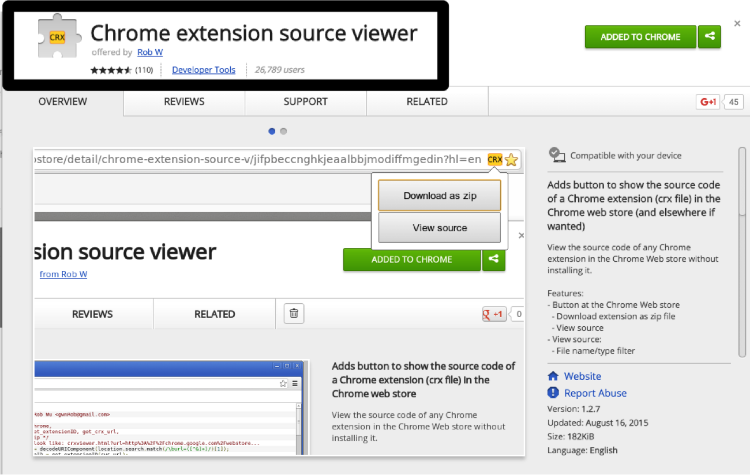Chrome Extension Crx Downloader
Manually Installing an Extension To install an extension manually, click the wrench menu, point to Tools, and select Extensions to open the Extensions page. If you’re seeing the message, Chrome has already downloaded the extension, app, or user script to your computer. You’ll find it in Chrome’s default download folder. Extensions and apps have the.crx file extension, while user scripts have the.user.js file extension. If it didn’t download to your computer, right-click the extension installation link on the page and use the Save As option to save it to your computer. Drag and drop the CRX (or user.js) file onto the Extensions page to install it. You’ll be prompted to confirm installation of the extension, just as if you had installed it from the Chrome Web Store.
Sql server data compare tools. If you go to create a new project in SSDT and you don't see SQL Server Database Project as an option, that means you don't have the right 'flavor' of SSDT installed yet. For instance, there might be data in a table and the script has a check statement in the beginning that prevents any changes and might need to be removed or handled differently. Thankfully the tools are being unified in SQL Server 2016, but prior to that you'll need to do a separate installation. The SSDT installation files for Visual Studio 2013 can be found here:. Separate Installation for SSDT vs SSDT-BI Prior to SQL Server 2016.

Chrome Extension Crx File
Always Allow Extensions From Outside the Chrome Web Store If you frequently install extensions from outside the Web Store, you can allow extension installation from any website by adding a command-line flag. To add a command-line option, you’ll have to edit the Chrome shortcut’s properties. To access these on Windows 7, assuming you launch Chrome from your taskbar, right-click the Chrome icon on your taskbar, right-click Google Chrome in the menu that appears, and select Properties. If you launch Chrome from your Start menu or your desktop, right-click the shortcut on your Start menu or desktop instead.
If you found the post useful for then let me know also I would love to hear your impressions of chocolaty for windows package management. Install chocolatey gui. Uninstall It is also very simple to uninstall a package, if I wanted to now remove a package we could run the following to remove that from the system.
Select the Shortcut tab and add the following text to the end of the Target box: –enable-easy-off-store-extension-install After changing this setting, close all Chrome windows and launch Chrome from the shortcut you modified. You may want to wait a few moments after closing all Chrome windows to ensure Chrome is no longer running in the background Try to install an extension from a web page and you’ll see a familiar installation prompt – click Continue to the install the extension.
DMGCExt.crx Download: One of the most irritated problems with using IDM is that it isn't by default integrated with Chrome or in other words, IDM Integration Module isn't by default installed to. Dec 8, 2014 - For one of my extensions I had to download other CRXs automatically knowing only extension ID. I solved this by opening the following URL.
Changing Chrome Policies Chrome includes policy settings designed for system administrators. If you use Chrome in your business and want to allow extension installation from a specific website or two, you can modify Chrome’s policies. This setting is changed in the registry on Windows, and in Chrome’s preferences files on Mac and Linux. For example, on Windows, you could add the following registry entry to allow extension installation from lastpass.com: Software Policies Google Chrome ExtensionInstallSources 1 = “For more information about this Chrome policy setting and other Chrome policy settings, consult the on the Chromium Project’s website.